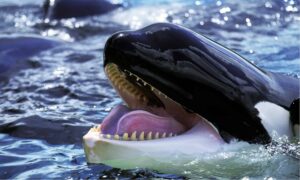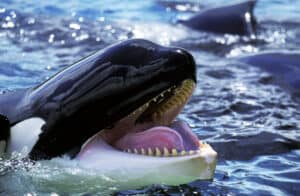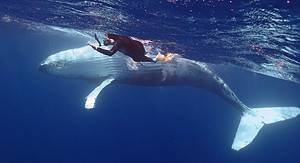Continue reading for our analysis...
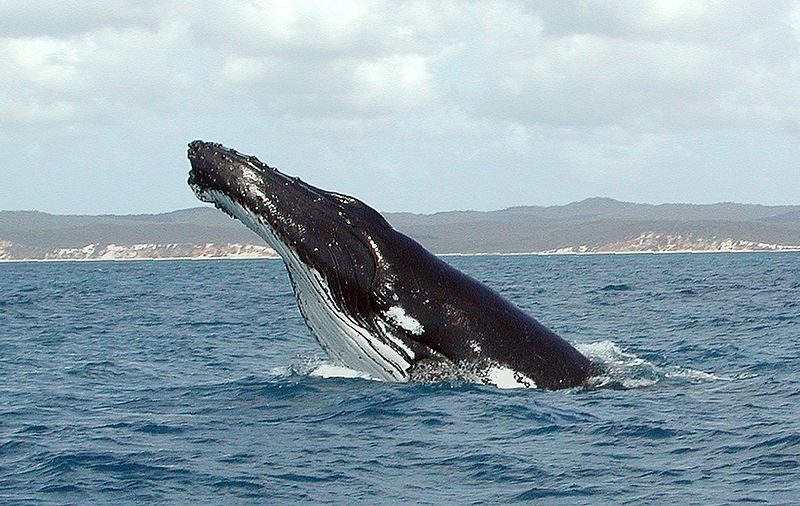
*The following video may be disturbing and contains some foul language. Watch as this whale eats the kayak.
You can charter a whale-watching tour to see the massive creatures from a distance, or you can kayak up close and personal with whales. But an incident off the coast got way too personal when a humpback whale attempted to eat two kayakers in California!
The video was shot by Sam Mcmillan of Atascadero, CA, who was out whale watching himself. He was taking photos of several humpback whales that were feeding in the area. They were all in San Luis Obispo Bay, which is halfway between Los Angeles and San Francisco.
Two women, Julie McSorely and Liz Cottriel were kayaking off of Avila Beach in a bright yellow tandem kayak. A peaceful scene of the kayakers in the bay with swarms of gulls flying around. You can hear them chattering as they look for food. The camera pans right where you see another woman in a red kayak who is causally looking around.
Seconds later, the water ripples, and immediately an enormous whale emerges from the water, mouth open, and the tandem kayak and the women inside of it appear to be swallowed! The whale goes under, and all you can see is the floating yellow kayak upside down. The women are gone!
Did the humpback whale attempt to eat the two kayakers in California? A few seconds later, the video cuts out with a shot of the one woman in the red kayak back paddling and the swarm of seagulls making a raucous.
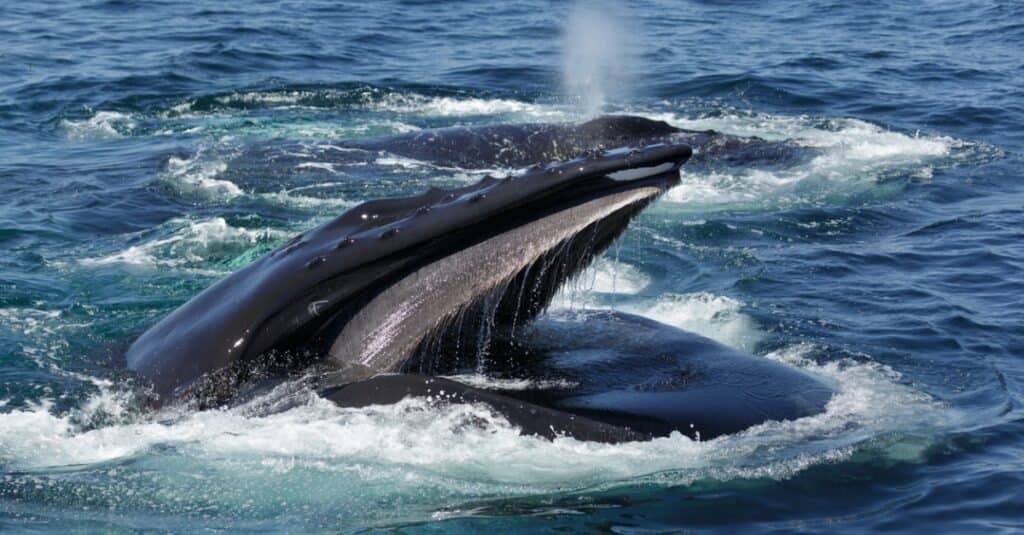
The spout of water that is seen arising from a whale’s blowhole doesn’t come from the lungs.
©iStock.com/stephenallen75
The good news is the women were safe and unharmed. The giant humpback whale just happened to breach the surface right under the kayak, where there was a huge bait ball of fish it was trying to eat.
Humpback whales do not intentionally eat people. This incident was purely the result of a kayaker being in the wrong place while a humpback whale was feeding on its preferred prey of plankton and small fish that it concentrates in small areas before taking giant gulps of water.
Both women were certainly frightened and alarmed but shared how they remember seeing the inside of the whale’s mouth, being thrown from their kayak, and then seconds later, popping up next to each other.
The news report shared that Julie McSorely had been out whale watching before. She was excited to invite her friend along.
Her friend, Liz Cottriel didn’t want to go! According to CBC Radio news, Liz said, ‘No, I don’t like the ocean. I’m scared of sharks. I’m scared of anything I can’t see in the water.’ But Julie convinced her it would be safe and fun!
Humpback whales come to feed along the shores of California from late April to early December. Although they are enormous animals, their diet consists of some of the smallest animals of krill, anchovies, and sardines.
The kayakers should have been more cautious when they saw the swarms of seagulls. The gulls often circle above the areas the whales choose to eat. Humpback Whales can get to be 48-62 feet long and weigh 40-100 tons!
The one in the video of the humpback whale that attempts to eat two kayakers in California was probably a juvenile whale as it looked to be a bit smaller. Still an extremely scary situation for all!
Where do Humpback whales live?
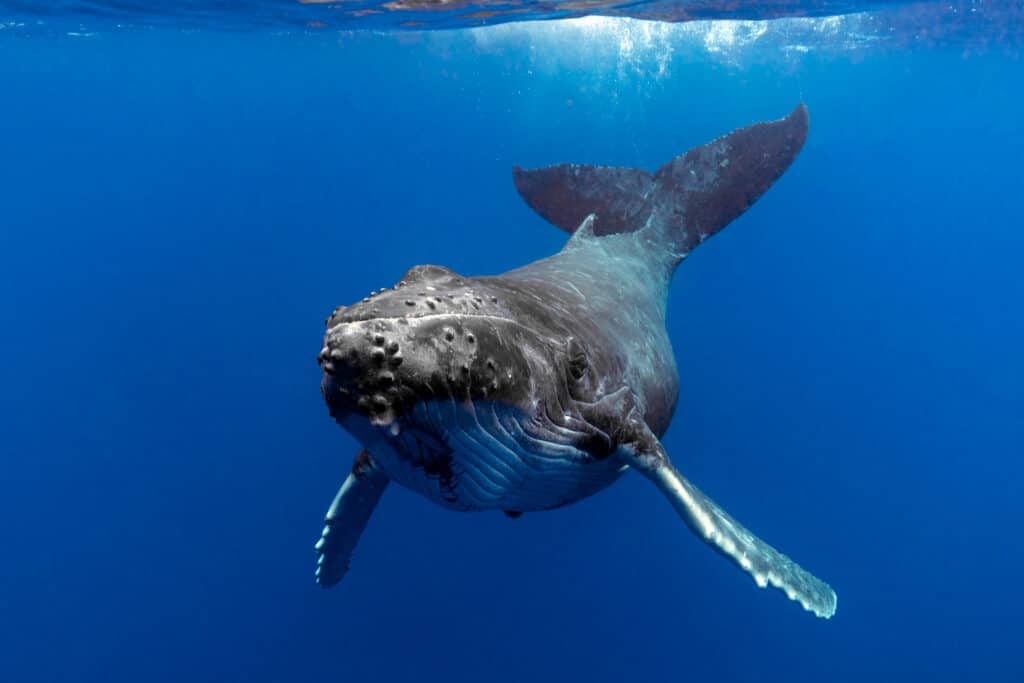
Humpback whales live in the ocean, but their range varies depending on the time of year.
©Craig Lambert Photography/Shutterstock.com
Humpback whales live in the ocean, but their range varies depending on the time of year. During the summer months, they can be found in colder, high-latitude waters such as those off the coast of Alaska, Canada, and Greenland.
Additionally, in the winter, they migrate to warmer, low-latitude waters, such as those off the coast of Hawaii, Mexico, and Central America, to breed and give birth. They can also be found in some coastal waters between these two regions.
How long do Humpback whales live?
Humpback whales typically live for around 50 years. However, some individuals have been known to live for over 80 years.
These whales reach sexual maturity around the age of 5 to 10 years, and females reproduce every 2-3 years. They have a gestation period of 11 to 12 months and give birth to a single calf at a time. They nurse their calf for around six months, and the calf will stay with the mother for a year before becoming independent.
In the wild, the main cause of death for humpback whales is from hunting, although entanglement in fishing gear, ship strikes, and pollution are also significant threats. With the cessation of commercial whaling, their populations have started recovering, but they are still considered a “threatened species” under the US Endangered Species Act.
Do Humpback Whales Normally Try To Eat People?
Humpback whales are filter-feeders, meaning that they only eat very tiny crustaceans and fish. They do this by swimming through or lunging up through schools of tiny fish with their mouths wide open. The back of their throat is a sieve.
Water flows through, and the fish or shrimp are trapped and swallowed. Even if a Humpback whale wanted to eat a person, it would not be possible. It is likely that this whale did not see the yellow kayak and was as surprised by getting a mouthful of boat and human as the person was. No doubt, a terrifying experience for everyone!
Conservation
In 2023, the conservation status of humpback whales is still vulnerable, according to the International Union for Conservation of Nature’s (IUCN) Red List. Despite many international regulations put in place to protect them, their population continues to be threatened by entanglement in fishing gear, ship strikes, and habitat loss due to climate change.
Humans can help save humpback whales by following existing laws that regulate fishing practices and shipping routes, supporting organizations that work on whale research and protection, such as Project Jonah or Greenpeace, reducing plastic waste that ends up in our oceans, and advocating for government policies that ensure a cleaner environment.
Thank you for reading! Have some feedback for us? Contact the AZ Animals editorial team.



